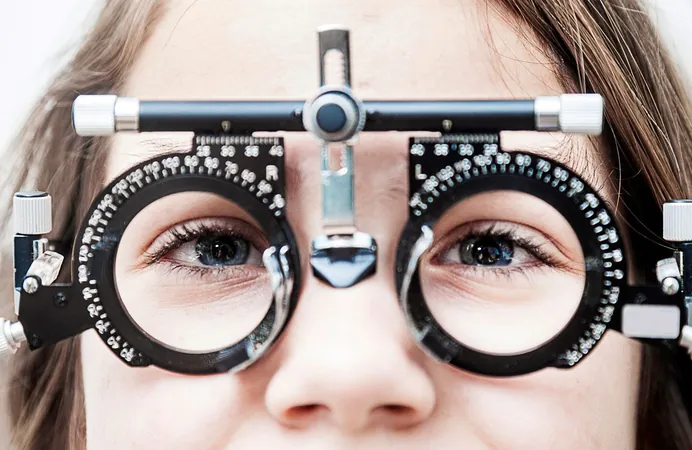
Alarming Surge in Children's Myopia: The COVID Lockdowns’ Hidden Consequence Exposed!
2024-09-30
Groundbreaking Study Reveals Alarming Statistics
A groundbreaking new study reveals that a staggering 30% of children and teens globally were diagnosed with nearsightedness (myopia) in 2023, and the situation is poised to worsen dramatically over the next two decades. Published in the esteemed British Journal of Ophthalmology, this pivotal research indicates that by 2050, nearly 740 million young people worldwide could suffer from this vision issue, casting a shadow over the future of children's eye health.
Research Insights from Dr. Yajun Chen
Dr. Yajun Chen, a professor at Sun Yat-sen University in China and lead author of the study, underscores the alarming findings. The research, which analyzed data from over 276 studies encompassing more than 5.4 million participants across 50 countries, highlights significant disparities in myopia rates based on factors such as geographical location, gender, and ethnicity. For instance, East Asia recorded the highest prevalence at 35.22%, particularly among urban populations (28.55%), females (33.57%), and adolescents aged 12 to 18 years (47%), with high school students showing the most alarming rate at 45.71%.
Impact of COVID-19 Lockdowns
The COVID-19 pandemic has been a significant catalyst for this myopia crisis. During lockdowns, children found themselves confined indoors with increased screen time and reduced outdoor activities, leading to a phenomenon experts have dubbed the "myopia explosion." Dr. Chen explains, "Prolonged indoor living diminished opportunities for children to exercise their eye muscles by adapting between near and distant views to maintain visual health."
Ramifications of Untreated Myopia
The ramifications of untreated myopia extend beyond poor vision; they can lead to academic challenges, social and emotional difficulties, and long-term eye health issues. Dr. Jesse Willingham, an optometrist specializing in children’s vision, warns that nearsightedness is just the tip of the iceberg. Early symptoms often include difficulties with tracking, focus, and coordination between the two eyes, which can significantly affect a child's learning experience.
Limitations of the Study
However, the study is not without limitations. The varied methodologies among the included studies indicate a potential risk of bias and uneven data distribution across regions. Dr. Chen cautions that future research is needed to ascertain more accurate assessments of myopia prevalence.
Recommendations for Parents and Educators
To combat this growing crisis, experts urge parents and educators to adopt proactive measures in fostering better eye health in children:
1. Encourage Outdoor Play
Children should spend more time outdoors. Schools and families can prioritize outdoor activities and sports that promote physical health and exposure to natural light.
2. Control Screen Time
Setting limitations on screen usage is essential, particularly encouraging alternatives such as limit one-to-one outdoor time for every hour spent in front of a screen.
3. Regular Eye Exams
Early detection is key! Children should undergo regular eye check-ups to monitor and address any vision problems promptly. Beyond mere screenings, it’s crucial to stay updated about advancements in treatments aimed at slowing myopia progression.
4. Community Engagement
Participation in community programs focused on vision screening and education can galvanize efforts to curb the rising tide of myopia among youth.
Call to Action
Join the movement to protect our children’s vision! By raising awareness and implementing these recommendations, we can make strides toward reducing the prevalence of nearsightedness and ensuring a clearer future for our children’s eyesight.


 Brasil (PT)
Brasil (PT)
 Canada (EN)
Canada (EN)
 Chile (ES)
Chile (ES)
 España (ES)
España (ES)
 France (FR)
France (FR)
 Hong Kong (EN)
Hong Kong (EN)
 Italia (IT)
Italia (IT)
 日本 (JA)
日本 (JA)
 Magyarország (HU)
Magyarország (HU)
 Norge (NO)
Norge (NO)
 Polska (PL)
Polska (PL)
 Schweiz (DE)
Schweiz (DE)
 Singapore (EN)
Singapore (EN)
 Sverige (SV)
Sverige (SV)
 Suomi (FI)
Suomi (FI)
 Türkiye (TR)
Türkiye (TR)